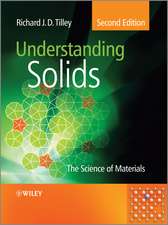Electron Correlations in Solids, Molecules, and Atoms: NATO Science Series B:, cartea 81
Editat de Jozef T. Devreese, Fons Brosensen Limba Engleză Paperback – 3 oct 2011
Din seria NATO Science Series B:
- 5%
 Preț: 375.70 lei
Preț: 375.70 lei - 5%
 Preț: 369.29 lei
Preț: 369.29 lei - 5%
 Preț: 720.84 lei
Preț: 720.84 lei - 18%
 Preț: 1406.03 lei
Preț: 1406.03 lei - 5%
 Preț: 373.33 lei
Preț: 373.33 lei - 5%
 Preț: 723.78 lei
Preț: 723.78 lei -
 Preț: 391.79 lei
Preț: 391.79 lei - 5%
 Preț: 1445.00 lei
Preț: 1445.00 lei - 5%
 Preț: 380.61 lei
Preț: 380.61 lei - 5%
 Preț: 1103.75 lei
Preț: 1103.75 lei - 5%
 Preț: 711.72 lei
Preț: 711.72 lei - 5%
 Preț: 1414.08 lei
Preț: 1414.08 lei - 18%
 Preț: 957.44 lei
Preț: 957.44 lei - 5%
 Preț: 723.21 lei
Preț: 723.21 lei - 5%
 Preț: 727.44 lei
Preț: 727.44 lei - 5%
 Preț: 1117.46 lei
Preț: 1117.46 lei - 5%
 Preț: 1423.55 lei
Preț: 1423.55 lei - 5%
 Preț: 366.56 lei
Preț: 366.56 lei - 5%
 Preț: 1116.21 lei
Preț: 1116.21 lei - 5%
 Preț: 1106.33 lei
Preț: 1106.33 lei - 5%
 Preț: 1107.77 lei
Preț: 1107.77 lei - 5%
 Preț: 1098.48 lei
Preț: 1098.48 lei - 5%
 Preț: 715.71 lei
Preț: 715.71 lei - 5%
 Preț: 1428.71 lei
Preț: 1428.71 lei - 5%
 Preț: 2004.54 lei
Preț: 2004.54 lei - 5%
 Preț: 724.70 lei
Preț: 724.70 lei - 5%
 Preț: 1438.38 lei
Preț: 1438.38 lei - 5%
 Preț: 1109.23 lei
Preț: 1109.23 lei - 5%
 Preț: 1414.64 lei
Preț: 1414.64 lei - 5%
 Preț: 1284.75 lei
Preț: 1284.75 lei - 5%
 Preț: 1023.26 lei
Preț: 1023.26 lei - 5%
 Preț: 388.12 lei
Preț: 388.12 lei - 5%
 Preț: 1104.48 lei
Preț: 1104.48 lei -
 Preț: 383.93 lei
Preț: 383.93 lei - 5%
 Preț: 718.46 lei
Preț: 718.46 lei - 5%
 Preț: 1113.63 lei
Preț: 1113.63 lei - 5%
 Preț: 369.45 lei
Preț: 369.45 lei - 5%
 Preț: 1108.72 lei
Preț: 1108.72 lei - 5%
 Preț: 1107.77 lei
Preț: 1107.77 lei - 5%
 Preț: 1297.99 lei
Preț: 1297.99 lei - 5%
 Preț: 1123.87 lei
Preț: 1123.87 lei - 5%
 Preț: 718.65 lei
Preț: 718.65 lei - 5%
 Preț: 2011.46 lei
Preț: 2011.46 lei - 5%
 Preț: 721.40 lei
Preț: 721.40 lei
Preț: 400.65 lei
Nou
Puncte Express: 601
Preț estimativ în valută:
76.66€ • 80.04$ • 63.45£
76.66€ • 80.04$ • 63.45£
Carte tipărită la comandă
Livrare economică 04-18 aprilie
Preluare comenzi: 021 569.72.76
Specificații
ISBN-13: 9781461334996
ISBN-10: 1461334993
Pagini: 452
Ilustrații: 435 p.
Dimensiuni: 170 x 244 x 24 mm
Greutate: 0.71 kg
Ediția:Softcover reprint of the original 1st ed. 1983
Editura: Springer Us
Colecția Springer
Seria NATO Science Series B:
Locul publicării:New York, NY, United States
ISBN-10: 1461334993
Pagini: 452
Ilustrații: 435 p.
Dimensiuni: 170 x 244 x 24 mm
Greutate: 0.71 kg
Ediția:Softcover reprint of the original 1st ed. 1983
Editura: Springer Us
Colecția Springer
Seria NATO Science Series B:
Locul publicării:New York, NY, United States
Public țintă
ResearchCuprins
Determination of S(q,?) by Inelastic Electron and X-ray Scattering.- Random phase approximation.- Static screening.- Finite frequency, small wave vector response.- Ultraviolet optical properties.- Inelastic electron scattering.- Beyond the random phase approximation.- Physical meaning of the function parameters.- High q measurements.- Stronger periodic fields.- Collective effects in atoms: a test case.- References.- Charge Density Wave Phenomena in Potassium.- I. The mysteries of the simple metals.- II. Phasons: what they are and what they do.- III. Theory of charge density waves.- References.- Electron-Hole Liquid: Role of Correlations.- I. Introduction.- II. What is an electron-hole liquid?.- III. Is the plasma phase more stable than the excitonic phase?.- IV. Ground state energy of EHL in Ge.- V. EHL in stressed Ge.- VI. Phase separation of “Hot” and “Cold” liquids.- VII. Remarks on correlations in a model e-h system.- References.- Kinetic Equations and Two-particle Correlations in the Homogeneous Electron Liquid.- 1. Basic definitions and formulas.- 2. Wigner distribution functions and the kinetic equations.- 3. Approximate decoupling procedures for the two- particles Wigner function.- 4. The kinetic equation for the two-particle Wigner function and some exact asymptotic formulas.- 5. Dynamic properties and the Mori formalism.- References.- Dynamical Exchange Effects in the Dielectric Function of the Electron Gas.- I: The jellium model: elementary concepts.- II: Dielectric function of the electron gas with dynamical exchange decoupling.- III: Discussion and comparison with first-order perturbation theory.- Liquid Alkali Metals and Alkali-Based Alloys as Electron-Ion Plasmas.- 1. Introduction.- 2. Some results of electron screening for crystal-line metals.-3. Electron screening for liquid metals.- 4. Structure factor of liquid alkali metals.- 5. Thermodynamic properties of liquid alkali alloys by the method of long waves.- 6. Some other alkali-based liquids.- References.- Resistance minima in Magnetic Alloys.- I. Historical survey.- II. Kondo effect.- III. Resistance minimum for impurity pairs.- IV. Superconductivity.- V. Conclusions.- References.- Theory of Exchange-Correlation Effects in the Electronic Single- and Two-Particle Excitations of Covalent Crystals.- I. Introduction.- II. Many-body description of the two-particle excitations in periodic crystals: examples diamond and silicon.- III. Dynamical correlation effects in the electronic quasi-particle states of perfect crystals: example diamond.- IV. The influence of many-body effects on the screening of impurities in perfect crystals: examples diamond and silicon.- V. Summary and discussion.- References.- Collective Phenomena in Non-Uniform Systems.- 1. Introduction.- 2. Hydrodynamical oscillations of an inhomqgeneous electron gas.- 3. Extensions and simplifications of the hydro-dynamical model.- 4. Applications and critique of the hydrodynamical model.- 5. The response of a non-uniform system to an external field.- 6. Some many-body aspects of atomic-like systems.- 7. Linearized quantum equations for density oscillations.- 8. Density functional theory applied to photo-absorption.- References.- Dynamical Structure Factor of an Electron Liquid.- I. Introduction.- II. Formulation.- III. Numerical results.- References.- Author index.











